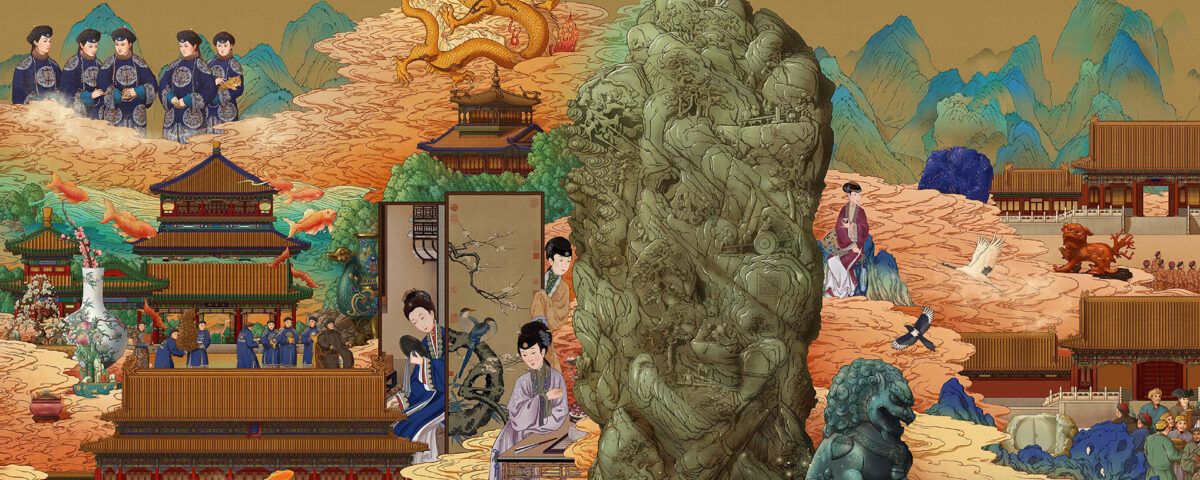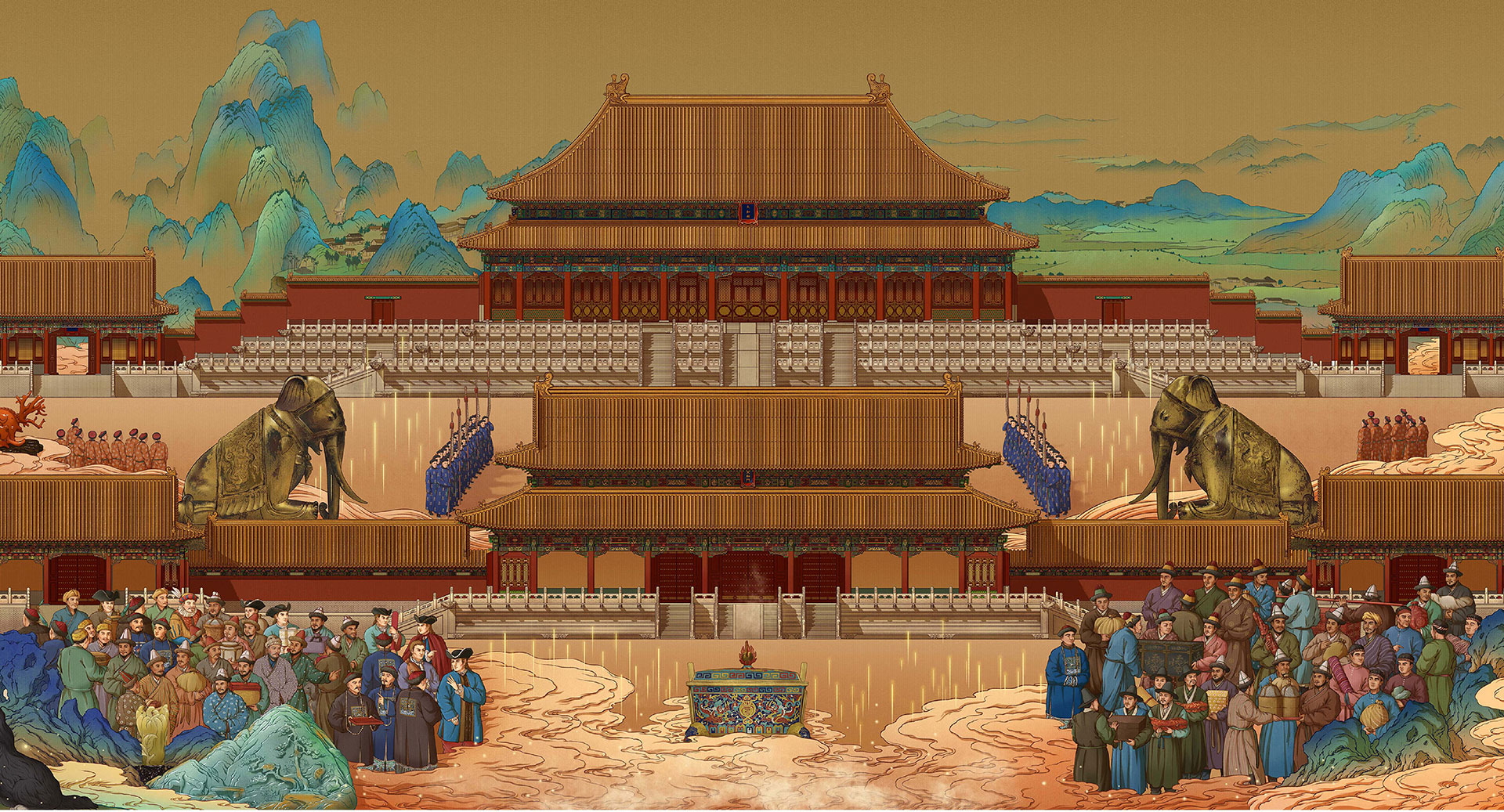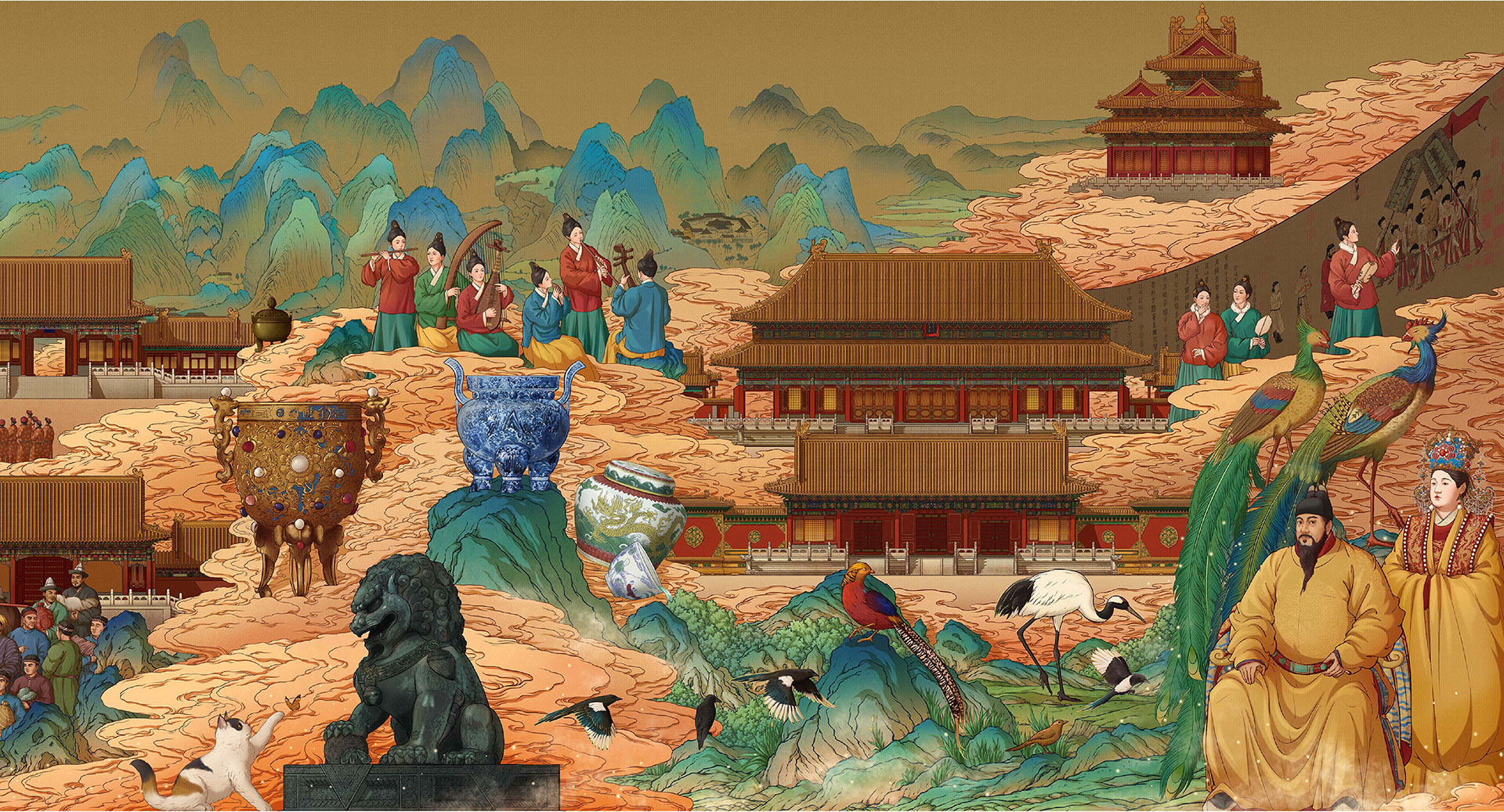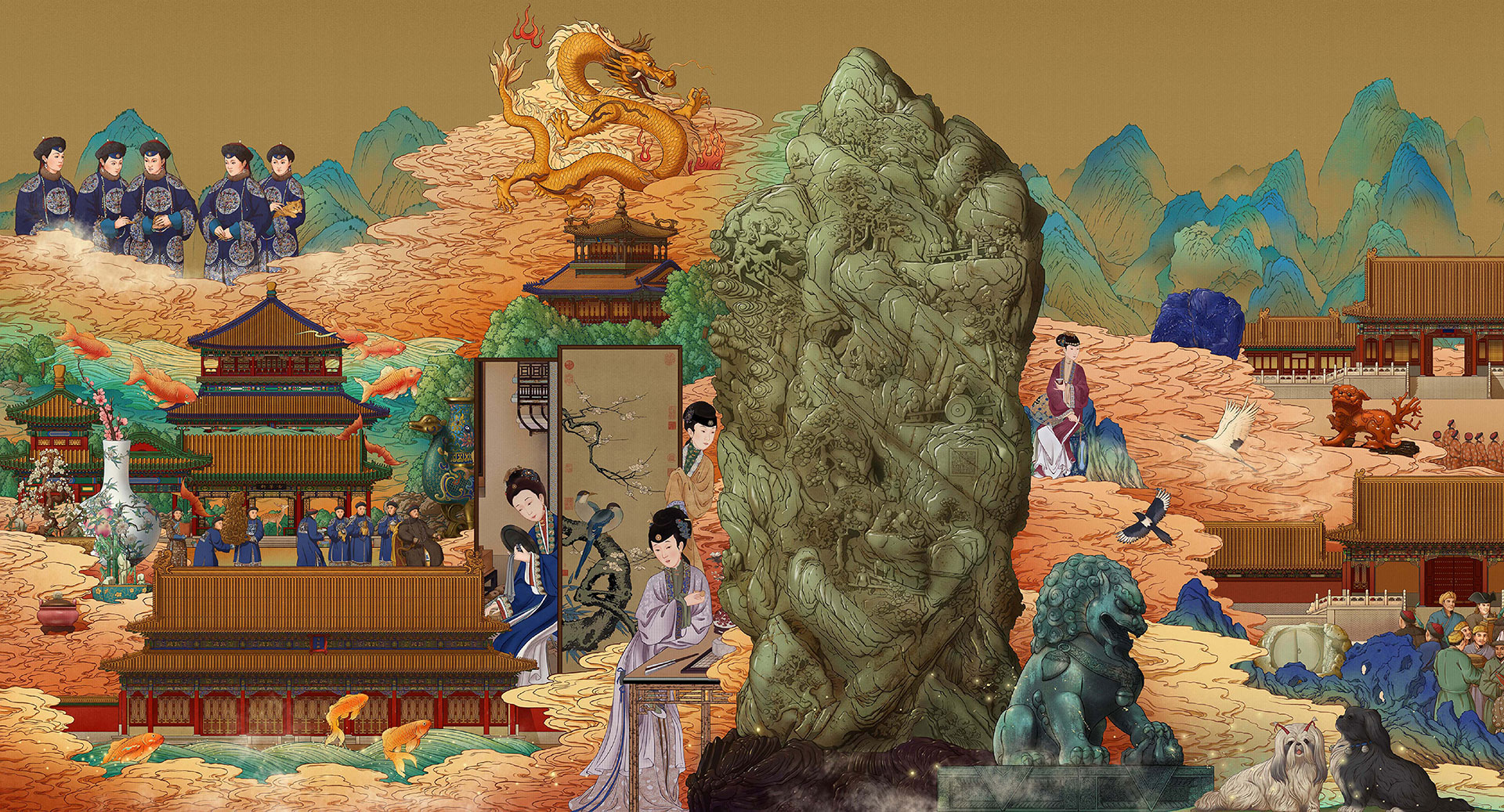Illustrations of the Forbidden City | Preserving Dynasties

Train | Connecting Destinations and Dreams
August 22, 2024
Fresh Wood | A Unique Culinary Aesthetic
August 22, 2024The Forbidden City
The Forbidden City is the imperial palace structure in the center of the Imperial City in Beijing, China. It is a UNESCO World Heritage Site, making it one of the most popular tourist attractions in the world. The "Illustrations of the Forbidden City" focuses its design on the panoramic view of the Forbidden City, combining its main buildings with classic cultural relics such as Bronze wares, Porcelains, Jade wares, and Calligraphy.
At the same time, it depicts the characters of the Ming and Qing dynasties with their own clothing characteristics, integrating various elements to showcase the traditional cultures of these characters. These elements are laid flat in a long scroll, depicting the historical accumulation and glory of the Forbidden City from a flat perspective. Additionally, the long flat scroll provides viewers the experience of viewing the vastness and exquisite architecture of the Forbidden City as well as witnessing the charm of interweaving ancient paintings and artifacts into the illustration. Viewing the illustration also instills a sense of understanding of the cultural heritage of the Ming and Qing dynasties. Within the illustration, the painting also displays the thousands of miles of rivers and mountains that run through the entire picture, depicting the real-life counterpart of China's geographical terrain. Throughout the entire illustration, the classics and history can be passed down forever to future generations.
The "Illustrations of the Forbidden City" divides a scene within the illustration that presents the two different parts of the Forbidden City; the Outer Court and the Inner Court. The architecture of the Forbidden City embodies the essence of traditional Chinese palace architecture where many of its original designs have been forgotten.
The center of the Outer Court is the Taihe Hall, Zhonghe Hall, and Baohe Hall, collectively known as the Three Great Halls. It is the most important group of structures within the imperial palace, these ideal measurements were crafted with a great deal of thought and effort. They are recognized as the architectural center of the Forbidden City and the symbol of concentrated imperial power.
The entire illustration of the Forbidden City presents itself as a reminder that traditional and cultural relics, culture, and architecture could one day be gone from existence. With the "Illustrations of the Forbidden City," one can savor the artistic and cultural visuals to gain cultural knowledge. It is a promotional masterpiece where it markets the cultural heritage of China while making the Forbidden City a must sought destination.
Credits
Entry Title: Illustrations of the Forbidden City
Entrant Company: Beijing Wuyao Cultural and Creative Co. Ltd.
Winning Category: Marketing & Promotional - Illustration
Explore the Prime Jurors of the 2024 MUSE Creative Awards, the esteemed panel whose dedications shape the award here.







